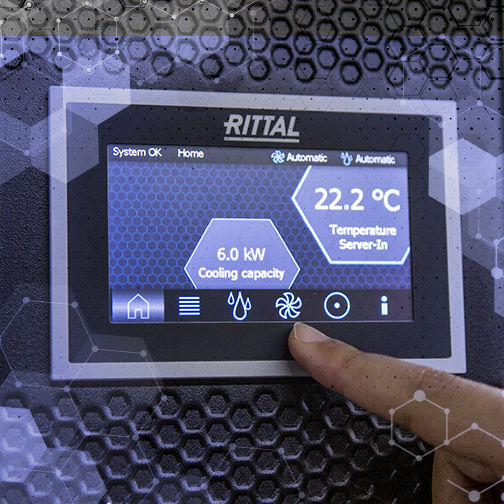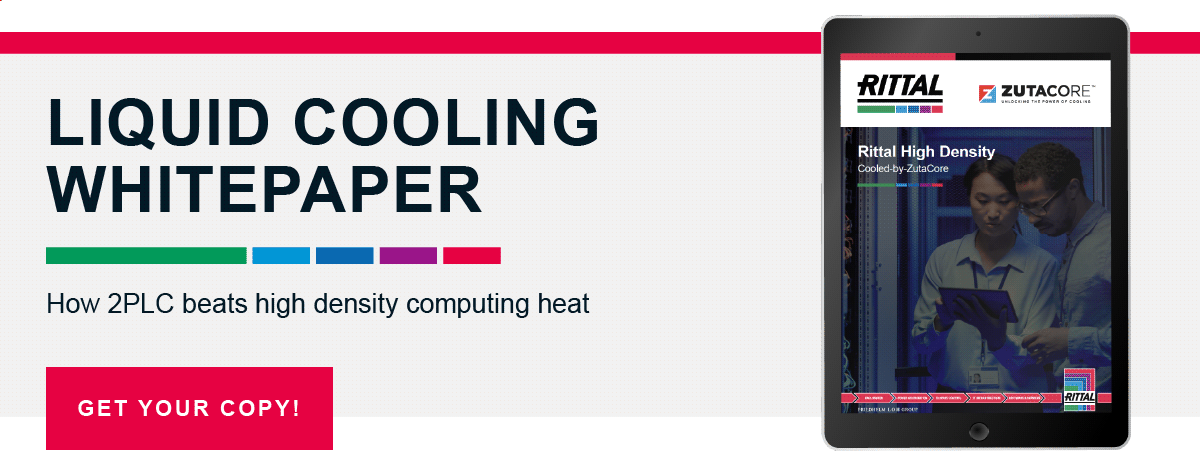Data Center Cooling: Q & A with Rittal
Below is an interview with Herb Villa, Senior Solutions Consultant at Rittal. Villa has extensive experience in data center design and deployment, and applies his knowledge of cabling, power distribution and climate control to help customers gain efficiencies and maximize uptime.
How to Achieve Data Center Cooling with Ease
Q: You sometimes refer to the “KISS” principle when talking about data center enclosures; how does it apply to Facility Managers looking for cooling solutions?
A: Everyone knows the KISS principle as, “Keep it simple stupid,” but I use the acronym to mean “keep it simple and scalable.” These are two of the most important principles when you talk about adding a new footprint to the data center. First, don’t overcomplicate the enclosure, and second, make sure you can easily scale up as needs change. We’re seeing some massive densities on the horizon, and all that power creates a significant amount of heat. The cooling system you choose has to be able to handle it.
Q: When higher densities make the data center’s cooling challenge more severe, how do you keep the solution simple and scalable?
A: It’s becoming more and more common today – data centers that were once able to adequately remove heat with a traditional room air conditioning system now can’t keep up. Densities are growing exponentially, and that’s placing a huge burden on these systems; in fact, traditional systems are failing to address the heat properly. If enclosures are holding equipment capable of more than 20 or 30kW, more efficient cooling is required in order to keep the equipment at the right temperature. This is where liquid cooling comes in; liquid cooling can handle the extra loads.
Data Center Architecture and Cooling: When Simplest is Best
Q: What if the data center’s infrastructure can’t handle liquid cooling. In other words, what if there’s no (or not enough) water on site?
A: You have to ask - can I scale up without water? And in many cases the answer will be no. And if there is no or limited capacity, what can you do? It may be a painful but very necessary reality to make the investment in the required systems.
Yet, even without a suitable facility water infrastructure, there are a number of efficient high density cooling options, one of which is Rittal’s new Cooled-by-ZutaCore solution – a direct to chip solution (sometimes referred to as direct on chip) brings a dielectric fluid right to the chip where the heat is generated and requires limited infrastructure changes. As a closed loop system it is one of the most efficient types of cooling that, unlike room air conditioning, does not waste energy cooling the air around the enclosure.
Rittal has a number of high density cooling options, whether water based or relying on other mediums. Originally, our liquid cooling units offered cooling up to 30kW but today can be configured to cool from 10 to 60kW. And this expanded capacity comes with the added benefit of fitting into the same space-saving footprint – it’s scalable and can be retrofit to make existing installations even more efficient.
Q: In higher density deployments, what factors are taken into consideration when selecting the right enclosure?
A: In addition to a heat removal strategy, the choice of enclosure will be determined by the type, quantity, and thermal loads of the IT equipment to be installed, as well as space considerations and constraints, site capacity, future growth plans and other factors. It's critical that you enable scalability for future growth. To do that, identify solutions that will reduce cost and reduce complexity – the last thing data centers want is for their solutions to be expensive and cumbersome to manage. Enclosures that reduce complexity and cost are modular – parts that can be rearranged without any need to cut/weld, making it simple for staff to reconfigure to support future deployments, even if new equipment does not match what is already in the enclosure. A modular enclosure can also be compartmentalized, allowing IT equipment to be installed in the same cabinet as power equipment, and allow for thermal isolation (applying different cooling methods within the same enclosure to accommodate various types of equipment).
In the end, simplicity isn’t just about the engineering and design, though; it’s about having a customer-centric view of products and services that makes working with a vendor partner simple, too. Here’s an example: we know that installing accessories into an enclosure takes a fair amount of time for data center staff...so, Rittal keeps it “simple and scalable” for customers by pre-installing core accessories at our factory exactly to customers specs, if that’s what they want. Doing this saves the data center staff time and effort because their enclosures arrive ready to go.
Herb Villa is just one of several Rittal experts who works closely with data center customers to identify the most efficient cooling solutions for today’s and tomorrow’s challenges. To talk about solving yours, reach out to 847-240-4630 to start the discussion! In the meantime, learn more about some of the options available, download our High Performance Cooling White Paper!




